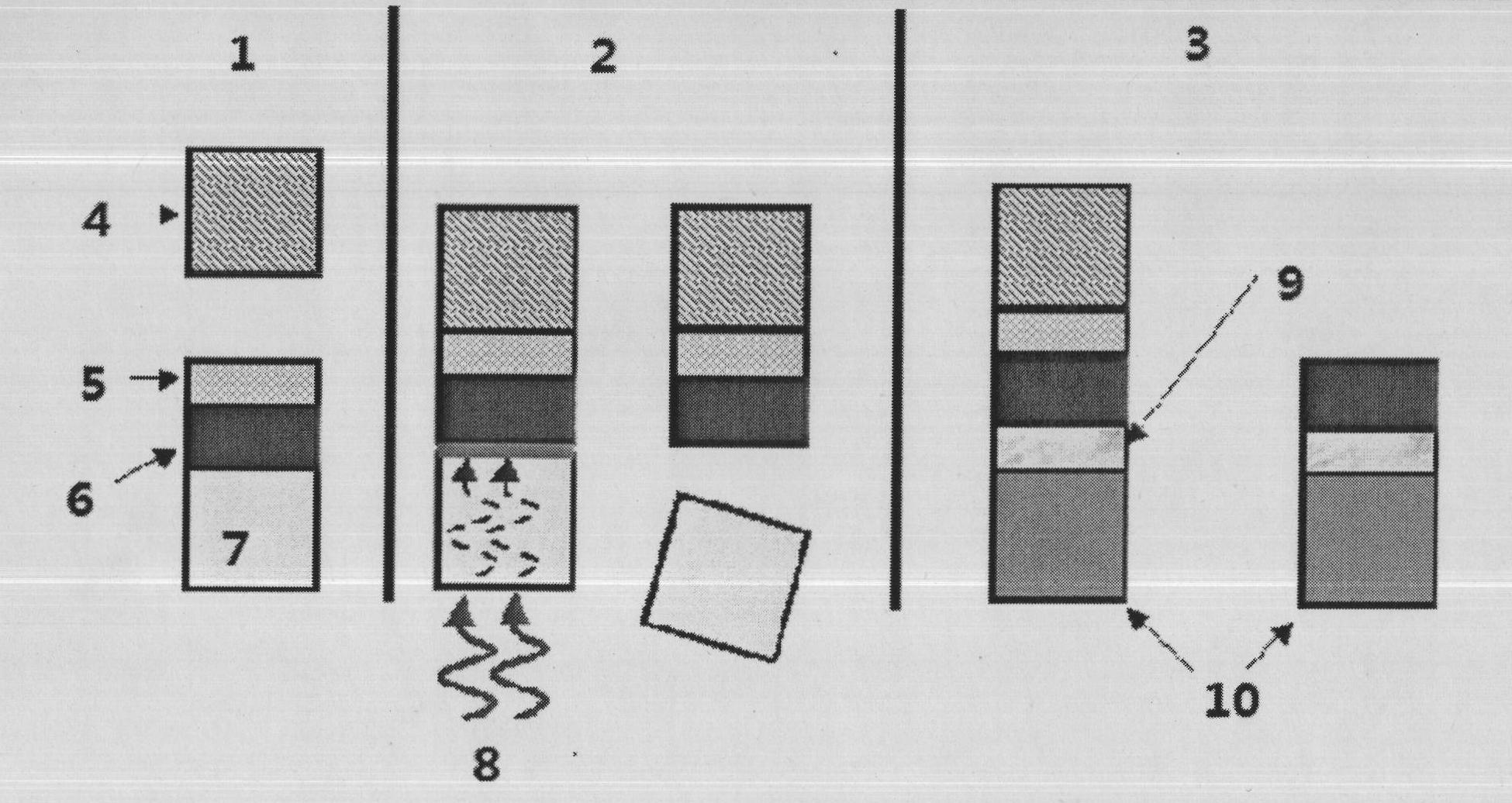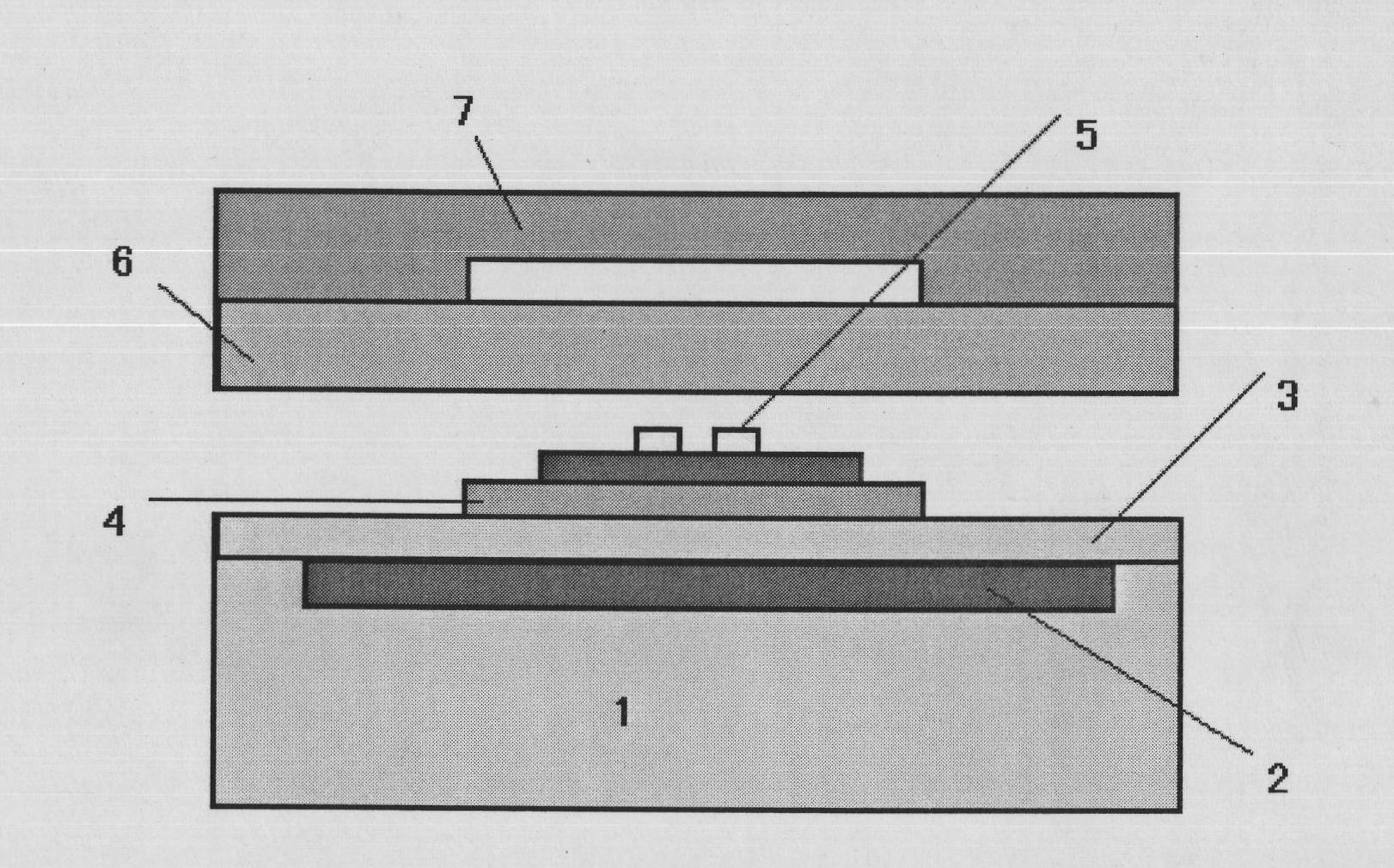Ultraviolet biological chip integrated sensor
A biochip and sensor technology, applied in the field of integrated biological warfare agent sensors, can solve the problems of bulky, inefficient, fragile systems, etc., achieve high sensitivity, reduce detection false alarm rate, and improve detection efficiency
- Summary
- Abstract
- Description
- Claims
- Application Information
AI Technical Summary
Problems solved by technology
Method used
Image
Examples
Embodiment Construction
[0009] 1. Production of UV filter
[0010] (1) First use the plasma enhanced chemical vapor deposition (PECVD) method to deposit SiO with a thickness of 150nm on the Si-PIN detector 2 layer, as an insulating layer and a diffusion barrier layer.
[0011] (2) Next, use a magnetron sputtering station to sputter an indium tin oxide (ITO) layer with a thickness of 200 nm as the conductive layer and reflective layer of the ultraviolet light emitting tube.
[0012] (3) Finally in SiO 2 A 6H-SiC layer is deposited on the film layer as an ultraviolet filter layer.
[0013] 2. Peel off UV light-emitting diodes
[0014] Using pulsed KrF excimer laser to peel off 340nm, 385nm ultraviolet light-emitting diodes from the sapphire substrate.
[0015] The process steps of excimer laser stripping ultraviolet light-emitting tubes are shown in Figure 1.
[0016] 3. Fabrication of dimethylsiloxane (PDMS) microfluidic chip
[0017] Using deep ion etching technology to fabricate PDMS microflui...
PUM
| Property | Measurement | Unit |
|---|---|---|
| thickness | aaaaa | aaaaa |
| thickness | aaaaa | aaaaa |
| emission peak | aaaaa | aaaaa |
Abstract
Description
Claims
Application Information
 Login to View More
Login to View More - R&D
- Intellectual Property
- Life Sciences
- Materials
- Tech Scout
- Unparalleled Data Quality
- Higher Quality Content
- 60% Fewer Hallucinations
Browse by: Latest US Patents, China's latest patents, Technical Efficacy Thesaurus, Application Domain, Technology Topic, Popular Technical Reports.
© 2025 PatSnap. All rights reserved.Legal|Privacy policy|Modern Slavery Act Transparency Statement|Sitemap|About US| Contact US: help@patsnap.com


